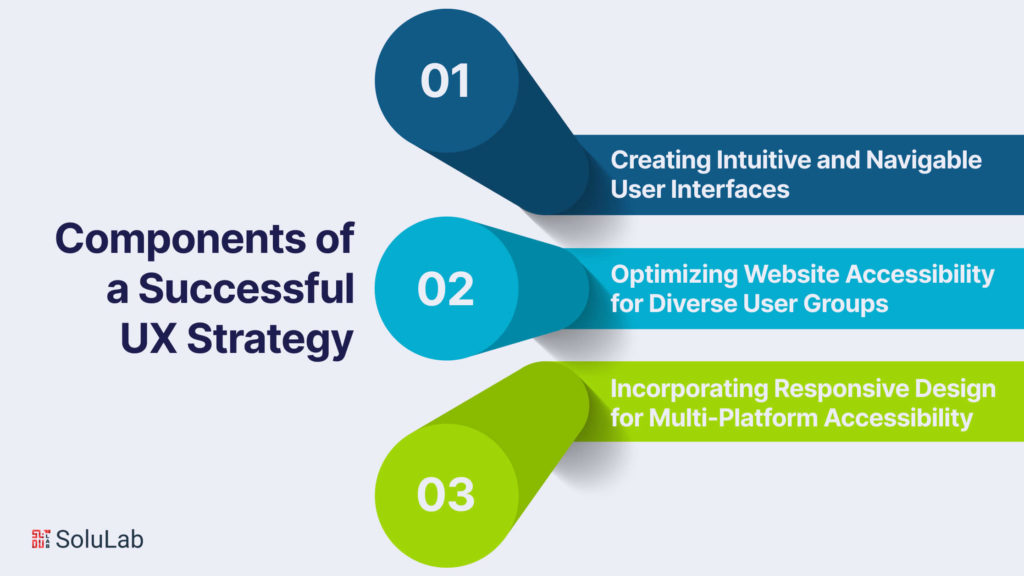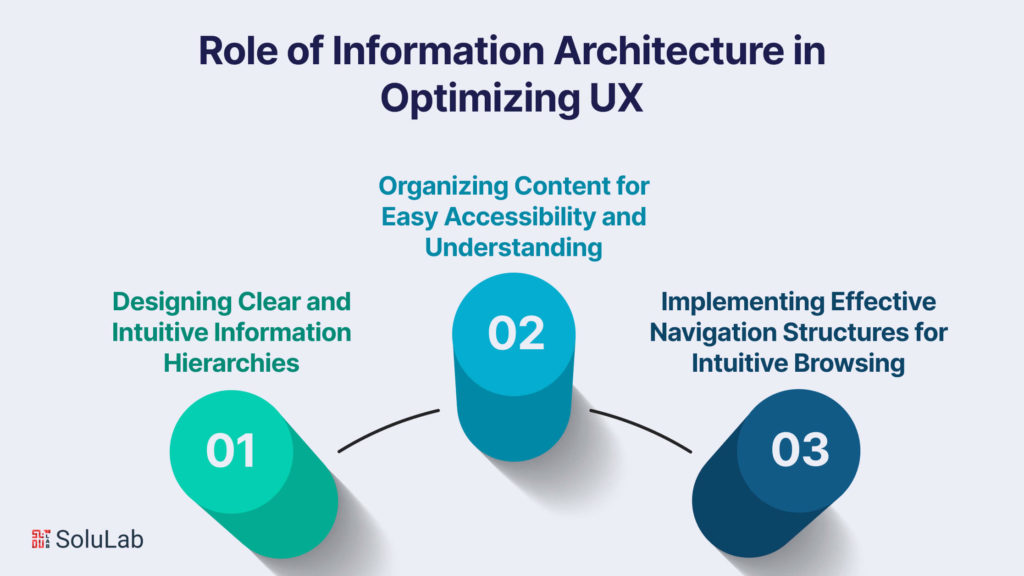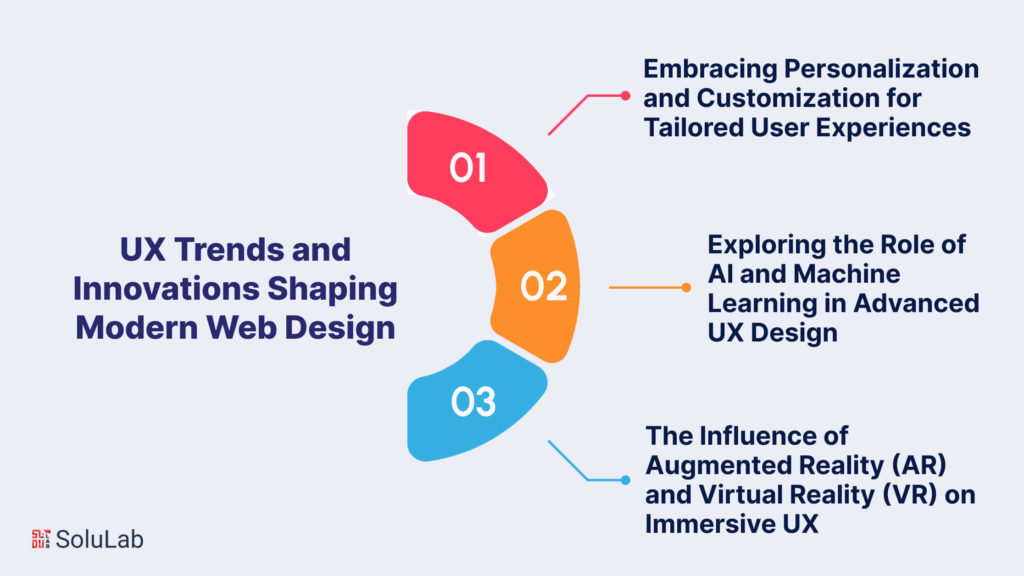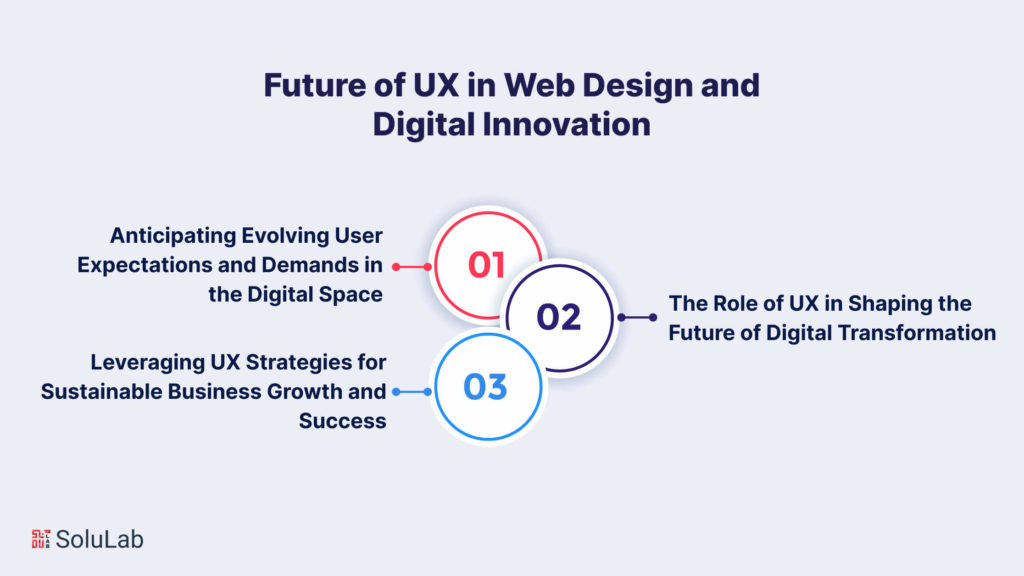
In the digital age, the user experience (UX) has emerged as a critical component of modern web design. UX encompasses various elements, including usability, accessibility, and interactivity, all of which contribute to the overall satisfaction and engagement of website visitors. As businesses strive to create a strong online presence and engage their target audience effectively, understanding the pivotal role of UX in web design becomes paramount. This comprehensive exploration delves into the intricate nuances of UX and its profound influence on the contemporary digital landscape.
Key Components of a Successful UX Strategy

-
Creating Intuitive and Navigable User Interfaces
Central to a successful UX strategy is the creation of intuitive and navigable user interfaces. This involves designing layouts and interactions that users can effortlessly understand and engage with. A clear and logical navigation structure ensures that users can find the information they seek without unnecessary complications.
-
Optimizing Website Accessibility for Diverse User Groups
Website accessibility is a key component of UX, emphasizing the inclusivity of design. Professionals in UX design and development services ensure that websites are accessible to users with varying abilities. This includes considerations for users with disabilities, making the digital experience universally welcoming.
-
Incorporating Responsive Design for Multi-Platform Accessibility
In the era of multi-platform usage, responsive design is a fundamental aspect of UX strategy. Websites need to adapt seamlessly to various devices, including desktops, tablets, and smartphones. Responsive design enhances user experience by providing consistent and visually appealing interfaces across different platforms.
Impact of UX on Website Performance and Engagement
-
Enhancing User Engagement through Seamless Navigation
Seamless navigation plays a pivotal role in enhancing user engagement. When visitors can effortlessly move through the website, they are more likely to stay longer, explore various sections, and interact with the content. Intuitive navigation contributes significantly to a positive overall user experience.
-
The Influence of Aesthetics and Visual Appeal on User Interaction
While functionality is crucial, aesthetics and visual appeal also play a significant role in user interaction. A visually pleasing design, coupled with a thoughtful use of colors, fonts, and imagery, contributes to a positive emotional response from users. This emotional connection can enhance engagement and encourage users to explore further.
-
Measuring the Impact of UX on Website Conversion Rates
The impact of UX on website conversion rates is measurable and substantial. A well-designed user experience guides visitors seamlessly through the conversion funnel, whether it’s making a purchase, filling out a form, or subscribing to a newsletter. A positive UX encourages users to take desired actions, ultimately contributing to higher conversion rates.
Implementing UX Best Practices in Web Design
-
Conducting User Research and Analysis for Informed Design Decisions
User research is the bedrock of informed design decisions. UX professionals conduct thorough research to understand the target audience’s needs, preferences, and pain points. This research-driven approach ensures that design decisions are aligned with user expectations, leading to a more effective and user-friendly website.
-
Integrating User Feedback and Iterative Design Processes
The integration of user feedback is a continuous and iterative process in UX design and development. Websites evolve based on user insights, and incorporating feedback leads to refinements that enhance the user experience. An iterative approach allows for continuous improvement, ensuring that the website remains responsive to changing user needs.
-
Streamlining User Journeys for Enhanced Engagement and Satisfaction
User journeys refer to the paths users take while navigating a website. Streamlining these journeys is a fundamental UX best practice. By mapping out user flows and eliminating unnecessary steps, designers can create efficient pathways that enhance engagement and satisfaction. A streamlined user journey contributes to a positive overall experience.
The Role of Information Architecture in Optimizing UX

-
Designing Clear and Intuitive Information Hierarchies
Information architecture focuses on organizing and structuring content in a clear and intuitive manner. A well-designed information hierarchy ensures that users can easily find the information they’re looking for. Clear categorization and logical structures contribute to an efficient and satisfying user experience.
-
Organizing Content for Easy Accessibility and Understanding
Content organization is integral to UX. Information should be organized logically, with attention to readability and accessibility. Proper labeling, categorization, and the use of headings and subheadings contribute to an organized content structure that enhances user comprehension and accessibility.
-
Implementing Effective Navigation Structures for Intuitive Browsing
Navigation structures are the backbone of a user-friendly website. Effective navigation ensures that users can move seamlessly between pages and sections. This includes well-designed menus, intuitive links, and clear calls to action. Intuitive browsing contributes to a positive user experience, reducing frustration and enhancing satisfaction.
The Integration of UX and SEO for Enhanced Website Performance
-
Optimizing UX Elements for Improved Search Engine Visibility
The integration of UX and SEO (search engine optimization) is crucial for enhancing website performance. UX elements, such as page load speed, mobile responsiveness, and user-friendly design, directly impact search engine visibility. Search engines prioritize websites that provide a positive user experience, contributing to improved rankings.
-
Understanding the Impact of Page Load Speed on User Satisfaction
Page load speed is a critical factor in UX. Users expect websites to load quickly, and delays can lead to frustration and increased bounce rates. Optimizing page load speed not only enhances user satisfaction but also positively influences search engine rankings. A fast-loading website contributes to a seamless and enjoyable user experience.
-
Leveraging UX Strategies for Higher Search Engine Rankings
Leveraging UX strategies is a proactive approach to achieving higher search engine rankings. Search engines consider factors such as user engagement, dwell time, and low bounce rates as indicators of a positive user experience. By prioritizing UX, websites can improve these metrics, ultimately contributing to higher rankings in search engine results.
The Significance of UX in eCommerce and Online Transactions
-
Simplifying the Checkout Process for Seamless Transactions
In the realm of eCommerce, UX is particularly crucial during the checkout process. A simplified and user-friendly checkout process minimizes friction, reduces cart abandonment, and encourages seamless transactions. UX design in eCommerce focuses on creating a smooth and secure path for users to complete their purchases.
-
Building Trust and Credibility through Secure and Intuitive eCommerce UX
Trust and credibility are paramount in eCommerce. UX design plays a significant role in building and maintaining trust. Secure and intuitive eCommerce experiences reassure users, encouraging them to make purchases with confidence. A well-designed eCommerce UX contributes to a positive brand image and customer loyalty.
-
Enhancing the Customer Journey for Increased Conversion Rates
The customer journey encompasses all interactions a user has with a brand. Enhancing this journey through strategic UX design contributes to increased conversion rates. By understanding user touchpoints, addressing pain points, and optimizing every stage of the customer journey, businesses can foster positive interactions that lead to higher conversion rates.
UX Trends and Innovations Shaping Modern Web Design

-
Embracing Personalization and Customization for Tailored User Experiences
Personalization and customization are key trends shaping modern web design. Users increasingly expect tailored experiences that cater to their preferences. UX design embraces personalization through features like personalized recommendations, content suggestions, and user-specific interfaces, creating a more engaging and relevant experience.
-
Exploring the Role of AI and Machine Learning in Advanced UX Design
AI (artificial intelligence) and machine learning are driving advancements in UX design. These technologies analyze user behavior, predict preferences, and automate personalized experiences. AI-driven chatbots, recommendation engines, and smart interfaces contribute to more sophisticated and responsive UX designs, meeting the evolving expectations of users.
-
The Influence of Augmented Reality (AR) and Virtual Reality (VR) on Immersive UX
Augmented reality (AR) and virtual reality (VR) are at the forefront of immersive UX design. These technologies create virtual environments and overlay digital elements in the real world, providing users with interactive and engaging experiences. AR and VR applications in UX design range from virtual try-on experiences in eCommerce to immersive storytelling in content delivery.
User Experience Testing and Evaluation for Continuous Improvement
-
Implementing A/B Testing and User Behavior Analysis for UX Optimization
A/B testing is a method of comparing two versions of a webpage to determine which performs better. It’s a valuable tool in UX optimization, allowing designers to test different elements and layouts to identify what resonates best with users. User behavior analysis complements A/B testing, providing insights into how users interact with different design variations.
-
Gathering User Feedback and Implementing Data-Driven UX Improvements
User feedback is a goldmine for UX improvements. Gathering feedback through surveys, user interviews, and analytics helps designers understand user perceptions and pain points. This data-driven approach enables iterative improvements, ensuring that the design aligns with user expectations and preferences.
-
Adopting Agile Methodologies for Iterative UX Design and Development
Agile methodologies have become integral to iterative UX design and development. Agile emphasizes collaboration, flexibility, and continuous improvement. UX designers work in cross-functional teams, incorporating feedback and making adjustments throughout the development process. This iterative approach ensures that the final product is user-centered and responsive to changing needs.
The Future of UX in Web Design and Digital Innovation

-
Anticipating Evolving User Expectations and Demands in the Digital Space
The future of UX in web design is closely tied to anticipating and meeting evolving user expectations. As technology and user behaviors evolve, designers need to stay ahead of the curve. Anticipating trends such as increased mobile usage, voice interfaces, and emerging technologies ensures that UX design remains relevant and effective.
-
The Role of UX in Shaping the Future of Digital Transformation
UX plays a pivotal role in shaping the future of digital transformation. As businesses embrace digital initiatives, the user experience becomes a central component of success. User-centered design principles, coupled with a deep understanding of user needs, will continue to guide digital transformation efforts across industries.
-
Leveraging UX Strategies for Sustainable Business Growth and Success
The ultimate goal of UX strategies is to contribute to sustainable business growth and success. A positive user experience builds customer loyalty, fosters brand advocacy, and contributes to long-term success. By prioritizing UX in web design, businesses can create digital experiences that resonate with users and drive ongoing growth.
Conclusion
In conclusion, the journey through the intricacies of user experience (UX) in web design has underscored the profound impact it has on shaping digital interactions. UX in web design is not merely about creating visually appealing websites; it’s a holistic approach that places users at the center, focusing on their needs, behaviors, and expectations. The importance of user experience in web design cannot be overstated. As we delved into the key components of a successful UX strategy, from intuitive navigation and responsive design to the impact on website performance and engagement, it became evident that a positive UX is the cornerstone of effective digital experiences.
UX design and development services play a pivotal role in crafting websites that go beyond aesthetics. These services, as discussed in the context of eCommerce, SEO integration, and the ever-evolving trends in UX design, contribute to the seamless blending of functionality and user-centric design. The integration of UX and SEO is a strategic move that not only improves search engine rankings but also enhances the overall user experience. Page load speed, mobile responsiveness, and user-friendly design are not just SEO considerations; they directly influence how users perceive and interact with a website.
Looking ahead, UX trends and innovations are shaping modern web design in exciting ways. Personalization and customization, driven by AI and machine learning, are elevating user experiences to new heights. The influence of augmented reality (AR) and virtual reality (VR) is creating immersive digital journeys that captivate and engage users. User experience testing and evaluation, through methods like A/B testing and user behavior analysis, are integral to continuous improvement. Agile methodologies ensure that UX design and development are iterative processes, adapting to user feedback and evolving requirements. Anticipating the future of UX in web design involves staying attuned to evolving user expectations and embracing digital transformation. As businesses navigate the digital landscape, the role of UX in shaping sustainable growth and success becomes increasingly clear.
In this context, Solulab stands as a beacon of excellence in UI/UX design and development. With a commitment to delivering top-notch web development services and a keen understanding of the importance of user experience in web design, Solulab emerges as a key player in the digital transformation landscape. Their expertise, coupled with a client-centric approach, positions them as leaders in the realm of UI/UX design and development services. In essence, user experience in web design is not just a design principle; it’s a strategic imperative. It’s about creating digital spaces that resonate with users, drive engagement, and foster lasting connections. As we navigate the ever-evolving landscape of technology and user expectations, prioritizing UX will undoubtedly remain paramount in creating impactful and meaningful digital experiences.
FAQs
1. What is the significance of user experience (UX) in web design?
User experience in web design is crucial as it directly influences how visitors interact with a website. A positive UX ensures easy navigation, accessibility, and overall user satisfaction, contributing to the success of digital platforms.
2. How does UX impact website performance and engagement?
UX plays a vital role in enhancing user engagement through seamless navigation, appealing aesthetics, and efficient interaction. A well-designed UX contributes to improved website performance and higher conversion rates.
3. What role does UX play in eCommerce and online transactions?
In eCommerce, UX is instrumental in simplifying the checkout process, building trust, and enhancing the overall customer journey. A positive eCommerce UX directly correlates with increased conversion rates and customer satisfaction.
4. How does UX integrate with SEO for improved website visibility?
Integrating UX with SEO involves optimizing elements like page load speed, mobile responsiveness, and user-friendly design. These considerations not only enhance user experience but also contribute to higher search engine rankings.
5. What are the emerging trends in UX design and development?
Emerging trends include personalization driven by AI and machine learning, as well as the integration of augmented reality (AR) and virtual reality (VR) for immersive digital experiences. These trends shape the future of UX in modern web design.
6. Why is continuous testing and evaluation essential for UX improvement?
Continuous testing, such as A/B testing and user behavior analysis, ensures that UX design remains responsive to user feedback and evolving requirements. It is an integral part of an iterative UX design and development process.
7. How does Solulab contribute to UI/UX design and development?
Solulab stands out as a leader in UI/UX design and development services, emphasizing a client-centric approach and expertise in delivering top-notch solutions. Their commitment to excellence positions them as a key player in the digital transformation landscape.






